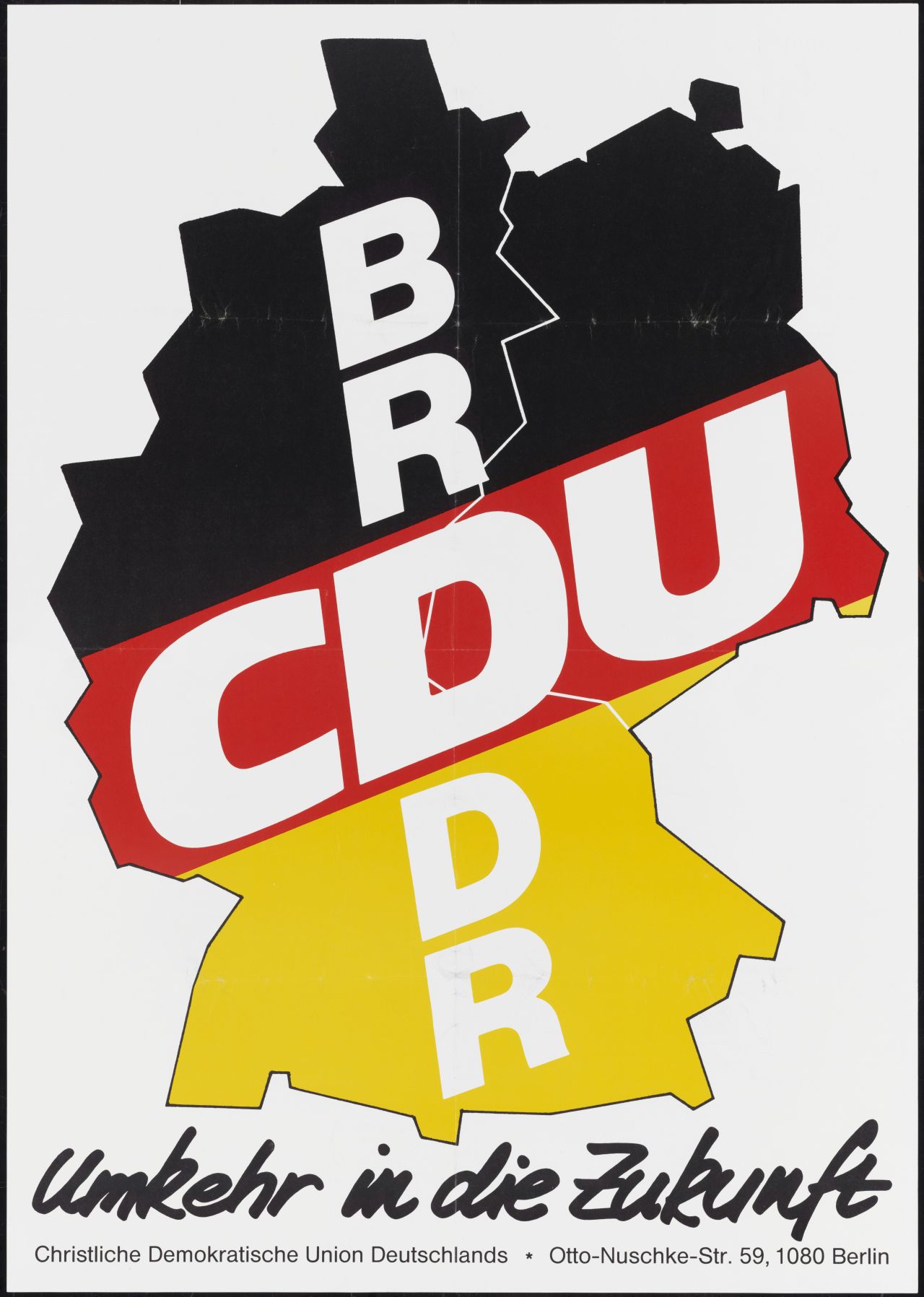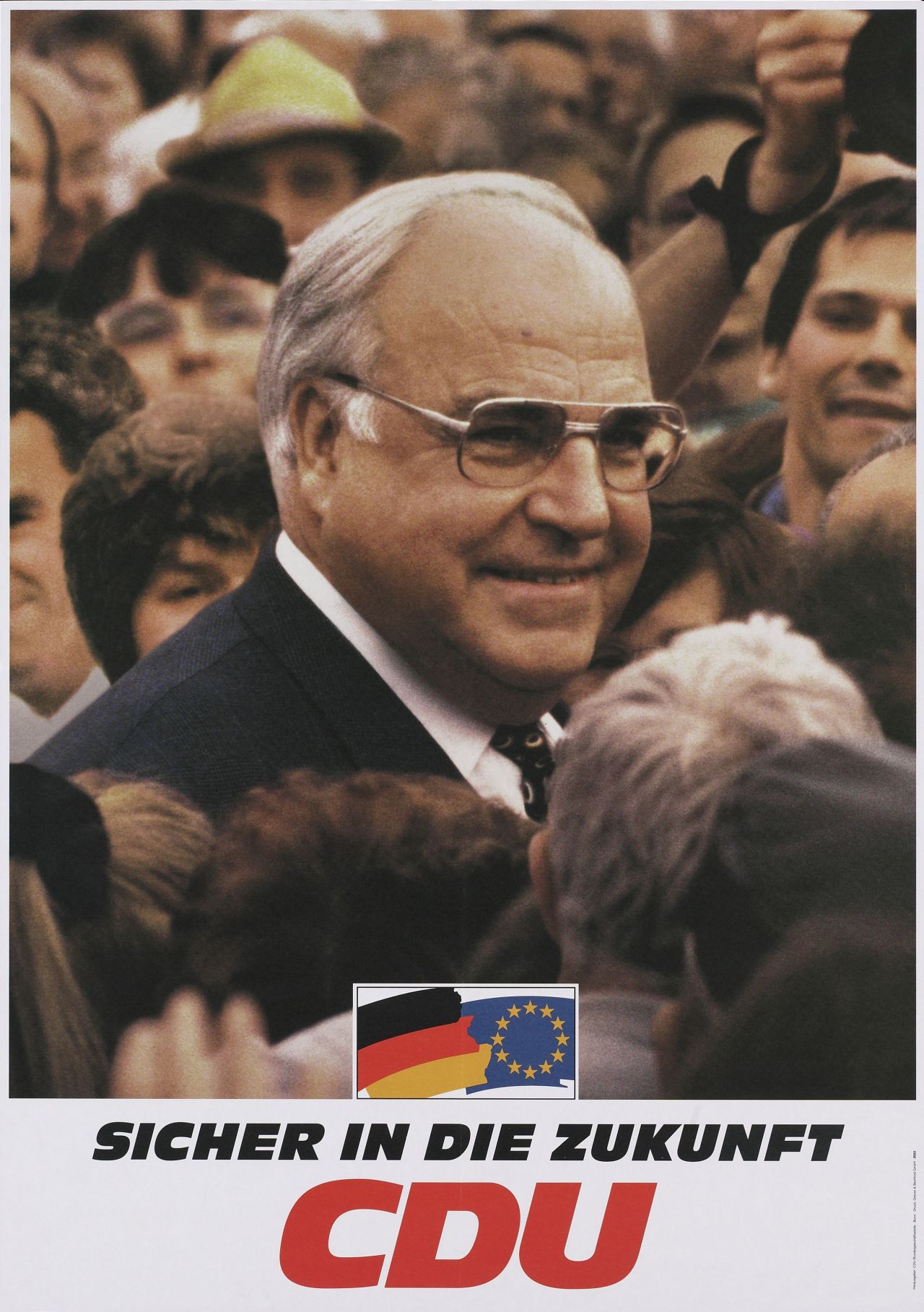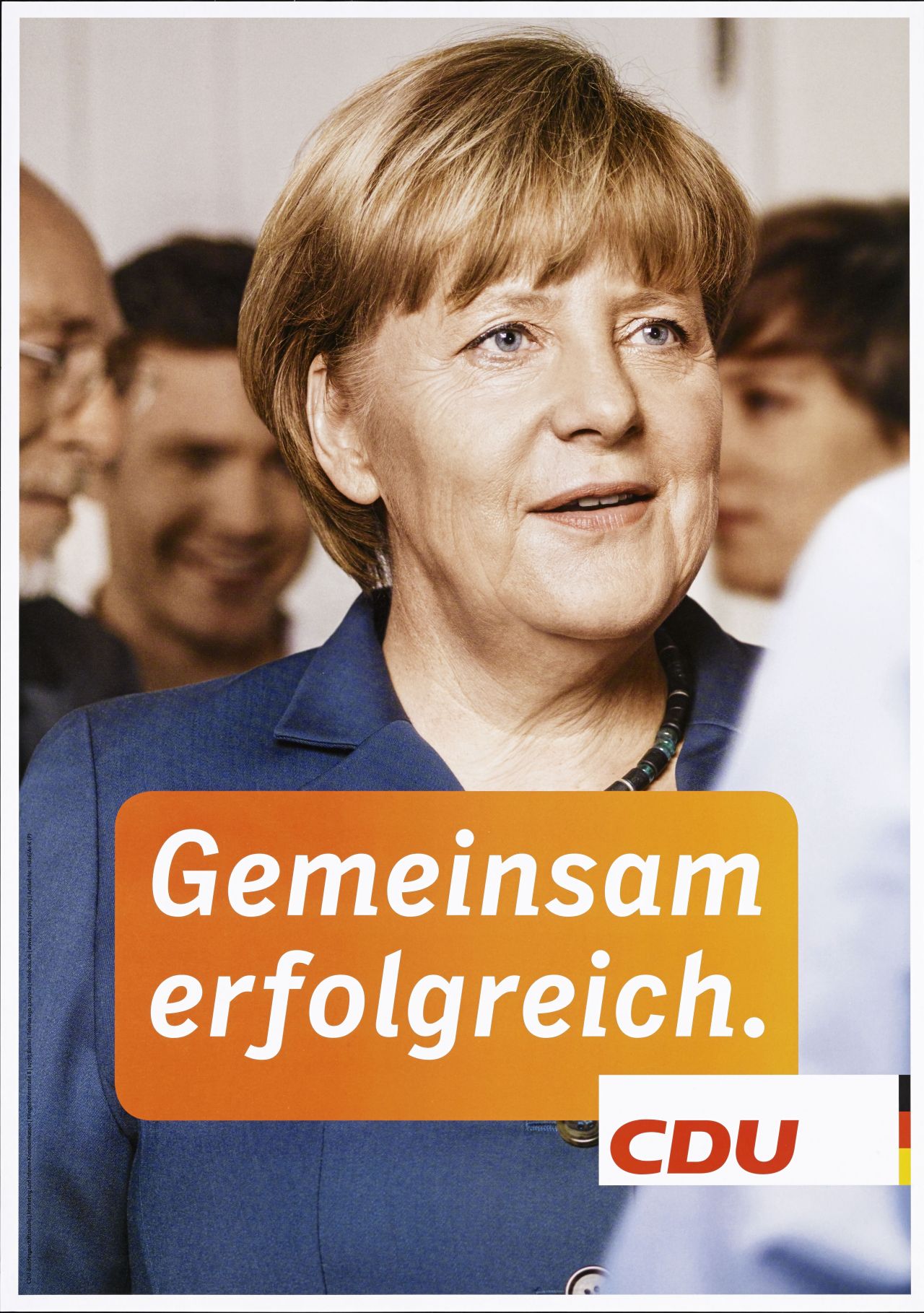CDU Wahlplakat 1991: A Deep Dive Into The Iconic Campaign
Let's talk about the CDU Wahlplakat 1991—a campaign that shaped German political history in ways we're still unpacking today. It wasn’t just a poster; it was a movement, a message, and a moment in time. This iconic campaign carried the hopes, dreams, and promises of a nation on the brink of transformation. So, buckle up because we're diving deep into what made this campaign so impactful—and why it still matters today.
Now, why should you care about a political poster from 1991? Well, think about it like this: every great story has its roots in history, and this one’s no exception. The CDU Wahlplakat 1991 wasn’t just a piece of paper with a slogan. It was a symbol of unity, a beacon of hope for a country that had just emerged from decades of division. And trust me, there’s a lot we can learn from how they pulled it off.
This article isn’t just about history—it’s about strategy, messaging, and the power of branding. Whether you're a history buff, a political junkie, or someone who just loves a good story, you’re gonna want to stick around. We’ll break down everything from the design to the impact, and even touch on some modern-day parallels. So, let’s get into it!
- Nando Zickgraf The Man Revolutionizing The Tech World
- Holtermann Imker The Sweet Buzz Of Beekeeping Mastery
Table of Contents:
- Background on CDU Wahlplakat 1991
- Design Elements of the Poster
- Impact on German Politics
- The Message Behind the Campaign
- Strategic Genius of CDU
- Comparison with Modern Campaigns
- Key Statistics and Data
- Controversies Surrounding the Campaign
- Legacy of the CDU Wahlplakat
- What the Future Holds
Background on CDU Wahlplakat 1991
Before we dive into the nitty-gritty, let’s set the stage. The year is 1991, and Germany is still basking in the glow of reunification. The Berlin Wall fell just two years prior, and the country is at a crossroads. Enter the Christian Democratic Union (CDU), helmed by Chancellor Helmut Kohl, a man with a vision for a united Germany.
The CDU Wahlplakat 1991 was more than just a campaign tool—it was a statement. It was designed to resonate with a nation that was still finding its footing in a post-reunification world. The poster featured Helmut Kohl himself, a towering figure who embodied stability and leadership. But what made this poster truly iconic was its simplicity and clarity of message.
- Mens Skirt The Ultimate Guide To Embracing Style Without Limits
- Free Soldier The Rise Of Independent Warriors In Modern Times
Now, here’s where things get interesting. The design of the poster wasn’t just about aesthetics—it was about psychology. The choice of colors, the font, and even Kohl’s expression were all carefully crafted to convey trust, reliability, and strength. And let’s not forget the slogan: "Kohl—That’s How Germany Succeeds." A message so powerful that it became synonymous with the campaign itself.
Historical Context
To truly understand the significance of the CDU Wahlplakat 1991, you have to look at the historical context. Germany in 1991 was a nation in transition. The fall of the Berlin Wall had brought about immense changes, both politically and socially. The CDU saw this as an opportunity to position itself as the party of unity and progress.
But it wasn’t just about reunification. The campaign also addressed pressing issues like economic stability, social welfare, and national identity. Kohl’s leadership was seen as a stabilizing force in a rapidly changing world. And the Wahlplakat became the visual representation of that leadership.
Design Elements of the Poster
Let’s talk design because, let’s be real, this poster was a masterpiece. The CDU Wahlplakat 1991 was a masterclass in simplicity and effectiveness. The layout was clean, the colors were bold, and the message was crystal clear. But what exactly made it so effective?
- Color Palette: The use of black, red, and gold was deliberate. These are the colors of the German flag, symbolizing unity and national pride.
- Typography: The font was simple yet striking, ensuring that the message was easily readable from a distance.
- Imagery: Helmut Kohl’s image was central to the design. His stern yet reassuring expression conveyed strength and leadership.
- Slogan Placement: The slogan "Kohl—That’s How Germany Succeeds" was placed prominently, ensuring that it was the first thing viewers noticed.
Every element of the design was intentional, designed to create an emotional connection with the viewer. And it worked. The poster became one of the most recognizable political campaigns of its time.
Psychological Impact
But the design wasn’t just about aesthetics—it was about psychology. The CDU Wahlplakat 1991 tapped into the fears and hopes of a nation in transition. It offered a sense of stability in uncertain times and a vision for the future that resonated with many Germans.
And let’s not forget the power of repetition. The poster was everywhere—on walls, in newspapers, on TV. This constant exposure reinforced the message and solidified Kohl’s image as a leader who could deliver on his promises.
Impact on German Politics
The impact of the CDU Wahlplakat 1991 on German politics cannot be overstated. It wasn’t just a campaign—it was a turning point. The poster helped secure Kohl’s re-election and cemented the CDU’s position as the dominant party in post-reunification Germany.
But the impact went beyond just winning an election. The campaign set a new standard for political advertising in Germany. It showed that a well-crafted message, paired with effective design, could resonate with voters on a deep emotional level.
And let’s not forget the long-term effects. The success of the CDU Wahlplakat 1991 influenced future campaigns, both in Germany and around the world. It became a case study in political marketing, a testament to the power of branding in politics.
Legacy in Modern Politics
Fast forward to today, and you can still see the influence of the CDU Wahlplakat 1991 in modern political campaigns. The emphasis on messaging, design, and emotional connection remains a key strategy for political parties around the world.
But what lessons can we learn from this campaign? First, the importance of understanding your audience. Second, the power of a clear and concise message. And third, the impact of effective branding. These are principles that still hold true today.
The Message Behind the Campaign
At its core, the CDU Wahlplakat 1991 was about unity, stability, and progress. The message was simple yet powerful: "Kohl—That’s How Germany Succeeds." It was a promise of a better future, a vision for a united Germany that could thrive in a rapidly changing world.
But the message wasn’t just about Kohl. It was about the CDU’s vision for Germany as a whole. It addressed issues like economic stability, social welfare, and national identity, offering solutions that resonated with voters across the political spectrum.
And let’s not forget the emotional appeal. The campaign tapped into the fears and hopes of a nation in transition, offering a sense of stability and security in uncertain times.
Resonance with Voters
So, why did this message resonate so strongly with voters? It was a combination of factors. First, Kohl’s leadership was seen as a stabilizing force in a rapidly changing world. Second, the CDU’s vision for a united Germany offered hope for a better future. And third, the campaign’s emotional appeal created a deep connection with voters.
It’s a reminder that in politics, it’s not just about policies—it’s about people. The CDU Wahlplakat 1991 understood this and used it to great effect.
Strategic Genius of CDU
The strategic genius of the CDU Wahlplakat 1991 lies in its simplicity and effectiveness. The campaign was carefully crafted to resonate with voters on multiple levels—emotional, intellectual, and visual. But what exactly made it so successful?
- Understanding the Audience: The CDU understood the needs and concerns of the German people in 1991. They crafted a message that addressed these issues directly.
- Effective Messaging: The slogan "Kohl—That’s How Germany Succeeds" was simple yet powerful, ensuring that the message was easily understood and remembered.
- Strong Branding: The use of the German flag colors and Kohl’s image created a strong brand identity that was instantly recognizable.
- Emotional Connection: The campaign tapped into the fears and hopes of a nation in transition, creating a deep emotional connection with voters.
It’s a lesson in the power of strategy. The CDU Wahlplakat 1991 wasn’t just a campaign—it was a carefully orchestrated plan to win hearts and minds.
Lessons for Modern Campaigns
What can modern campaigns learn from the CDU Wahlplakat 1991? First, the importance of understanding your audience. Second, the power of a clear and concise message. And third, the impact of effective branding. These are principles that still hold true today.
But perhaps the most important lesson is this: in politics, it’s not just about policies—it’s about people. The CDU Wahlplakat 1991 understood this and used it to great effect. And that’s why it remains one of the most iconic political campaigns of all time.
Comparison with Modern Campaigns
Let’s compare the CDU Wahlplakat 1991 with modern political campaigns. While technology has changed the way campaigns are run, the core principles remain the same. Understanding your audience, crafting a clear message, and creating an emotional connection are still key to success.
But there are differences too. Modern campaigns have access to data analytics, social media, and digital advertising—all tools that the CDU in 1991 didn’t have. Yet, the CDU Wahlplakat 1991 remains a benchmark for effective political advertising. Why? Because it got the fundamentals right.
And let’s not forget the power of nostalgia. The CDU Wahlplakat 1991 is still referenced in modern campaigns, a testament to its lasting impact.
Modern-Day Parallels
So, what are some modern-day parallels? Look at campaigns that focus on unity, stability, and progress. They’re tapping into the same emotions that made the CDU Wahlplakat 1991 so successful. And while the tools may have changed, the principles remain the same.
It’s a reminder that in politics, the fundamentals matter. Whether you’re running a campaign in 1991 or 2023, the key is to connect with people on a human level. And that’s something the CDU Wahlplakat 1991 did exceptionally well.
Key Statistics and Data
Let’s talk numbers. The CDU Wahlplakat 1991 wasn’t just a successful campaign—it was a statistical success. Kohl’s re-election in 1991 was a testament to the effectiveness of the campaign. But what exactly were the numbers?
- Election Results: Kohl secured 43.8% of the vote, the highest percentage for any party in the election.
- Turnout: Voter turnout was 79.1%, indicating strong engagement with the campaign.
- Media Coverage: The campaign received extensive media coverage, both domestically and internationally.
These numbers tell a story of a campaign that resonated with voters and delivered results. But they also highlight the importance of effective messaging and branding in political campaigns.
Data-Driven Insights
So, what can we learn from these numbers? First, the importance of engaging with voters. Second, the power of effective messaging. And third, the impact of strong branding. These are principles that still hold true today.



Detail Author:
- Name : Susanna Schumm
- Username : sydney41
- Email : rwunsch@yahoo.com
- Birthdate : 1997-08-21
- Address : 624 Dejon Fords Suite 921 South Rosalee, LA 72754
- Phone : 505.243.8058
- Company : Mohr, Friesen and Casper
- Job : Landscaping
- Bio : Delectus consequuntur cum quasi corporis maiores unde ullam. Laboriosam tenetur tempore delectus architecto quasi itaque. Nisi aut harum temporibus quasi.
Socials
twitter:
- url : https://twitter.com/hartmannk
- username : hartmannk
- bio : Deserunt itaque consequatur vel recusandae natus alias tempora. Dolor officia sunt reprehenderit. Autem ipsam quis sint voluptatem.
- followers : 4112
- following : 1764
linkedin:
- url : https://linkedin.com/in/hartmann2000
- username : hartmann2000
- bio : Ipsum sit nemo esse deserunt libero nemo.
- followers : 5528
- following : 721
instagram:
- url : https://instagram.com/khartmann
- username : khartmann
- bio : Est optio doloribus dolor necessitatibus perferendis ut deleniti. Ipsam ut qui voluptatem.
- followers : 4447
- following : 549